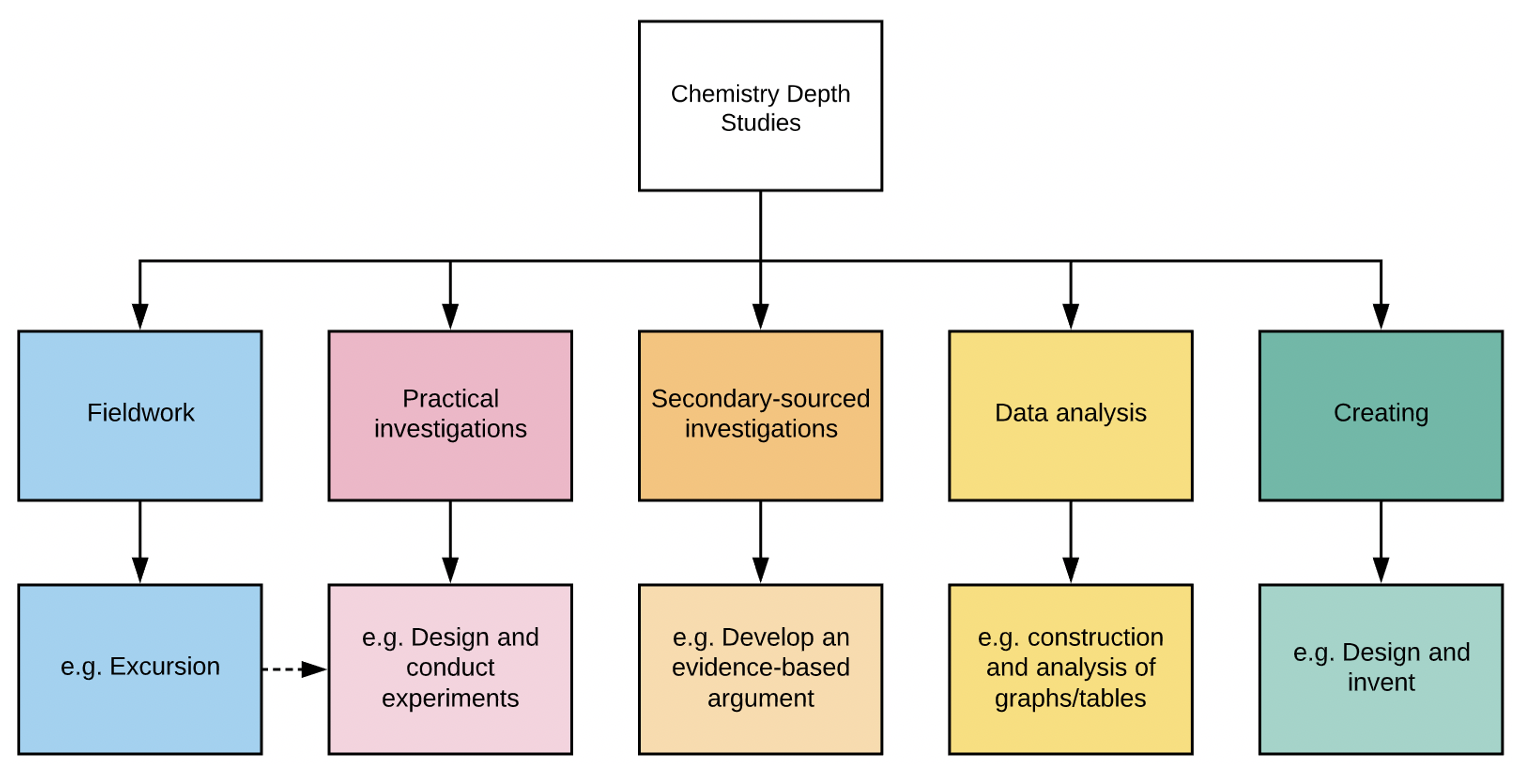Chemistry Depth Study | The Comprehensive Guide
Looking for Chemistry depth study ideas and examples?
If you are given a Chemistry depth study assessment task, you are probably as confused as many other students out there.
In this article, we discuss
- What depth studies are
- Ideas and tools for Chemistry depth studies
- Four steps to completing your Chemistry depth study
What are Chemistry depth studies?
A depth study is any type of investigation/activity that a student completes individually or collaboratively that allows the further development of one or more concepts found within or inspired by the Chemistry syllabus.
The flowchart categorises different types of depth studies:

A depth study may be, but is not limited to:
- A practical investigation or series of practical investigations
- A secondary-sourced investigation or series of secondary-sourced investigations
- Presentations, research assignments or fieldwork reports
- The extension of concepts found within the course, either qualitatively and/or quantitatively
Types and ideas for Chemistry depth study
Most Chemistry depth studies are on:
- Practical investigations or
- Secondary-sourced investigations
A list of Chemistry depth study types and useful tools are provided below. For more information on each Chemistry depth study type, click the link.
| Depth Study Type | Ideas | Useful tools |
| Practical investigations |
|
|
| Secondary-sourced investigations |
|
|
| Data Analysis | A practical investigation, or secondary-sourced investigation may require a form of data analysis. For example:
|
|
| Creating |
| |
| Fieldwork | Fieldwork may be a starting point for a practical investigation or secondary-sourced study and could be initiated by the following stimuli:
|
Source: NSW Education Standards Authority
Four steps to completing your depth study for Chemistry
The process for completing your Chemistry depth study is outlined below.
| Step | Action | Detail |
| 1 | Choose the type of depth study you would like to undertake if it is not prescribed by your school. | Many schools prescribe the type of depth study that HSC Chemistry students will undertake. Although there are many different depth study types, most schools assign a practical investigation for their depth study assessment. |
| 2 | Choose the idea for your chosen depth study type. | NESA has provided a list of ideas for each depth study type.
|
| 3 | Choose the topic for your Chemistry depth study. | Once your depth study type is defined, a good place to start choosing your topic is to think about which aspect of the HSC Chemistry course you find most interesting and/or enjoyable. If you’re unsure of what topic you’re interested in, try scanning through the various topics in all four modules and see if anything jumps out at you. For Year 11 Chemistry, the modules are:
For Year 12 Chemistry, the modules are:
|
| 4 | Conduct your Chemistry depth study. | Once you have chosen the topic and type of depth study to undertake, think carefully about how you will approach and structure your work.
|
Access our library of Chemistry practical investigations for your depth study.
Get free access to syllabus specific Chemistry practicals written by expert HSC teachers. Join 10000+ students who are getting ahead with Learnable. Try for free now.
Learnable Education and www.learnable.education, 2019. Unauthorised use and/or duplications of this material without express and written permission from this site's author and/or owner is strictly prohibited. Excerpts and links may be used, provided that full and clear credit is given to Learnable Education and www.learnable.education with appropriate and specific direction to the original content.
